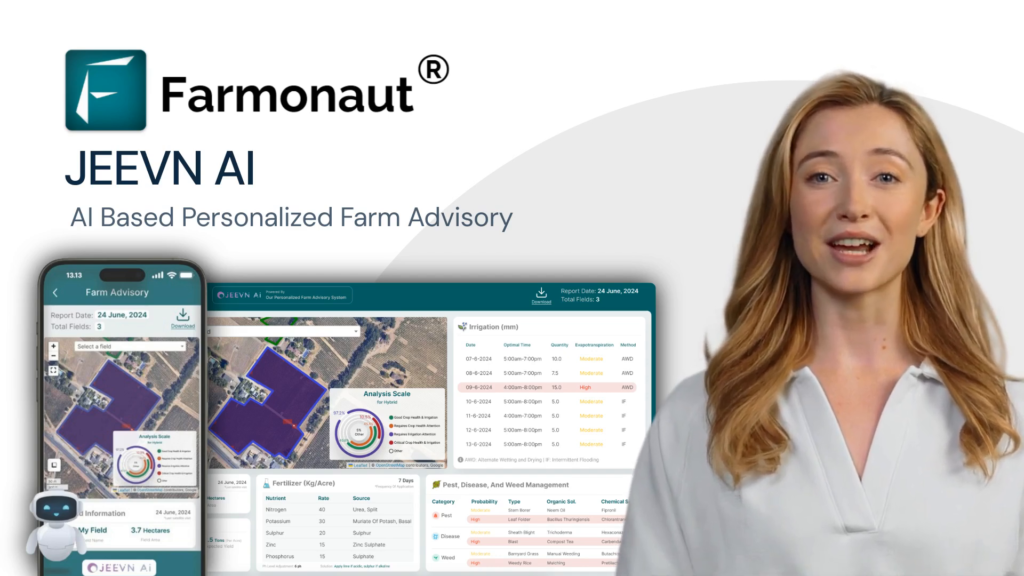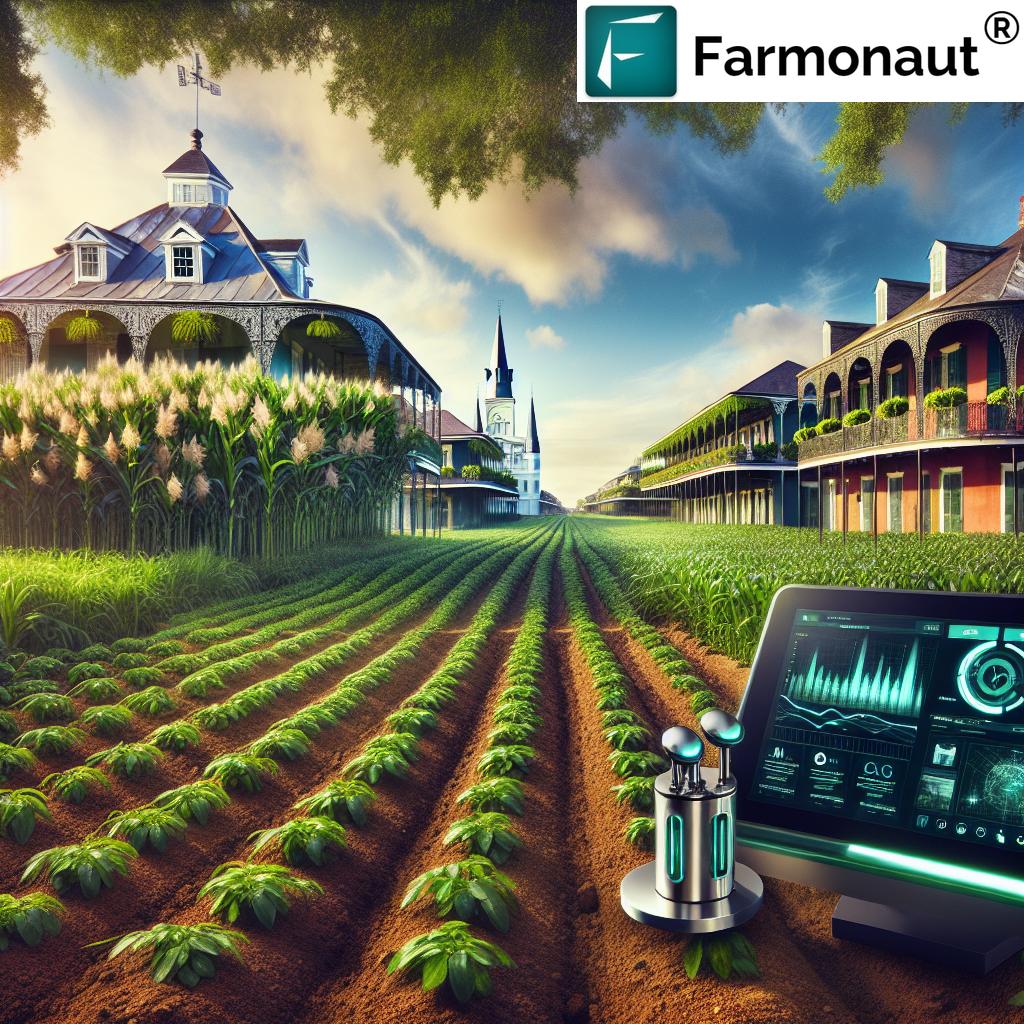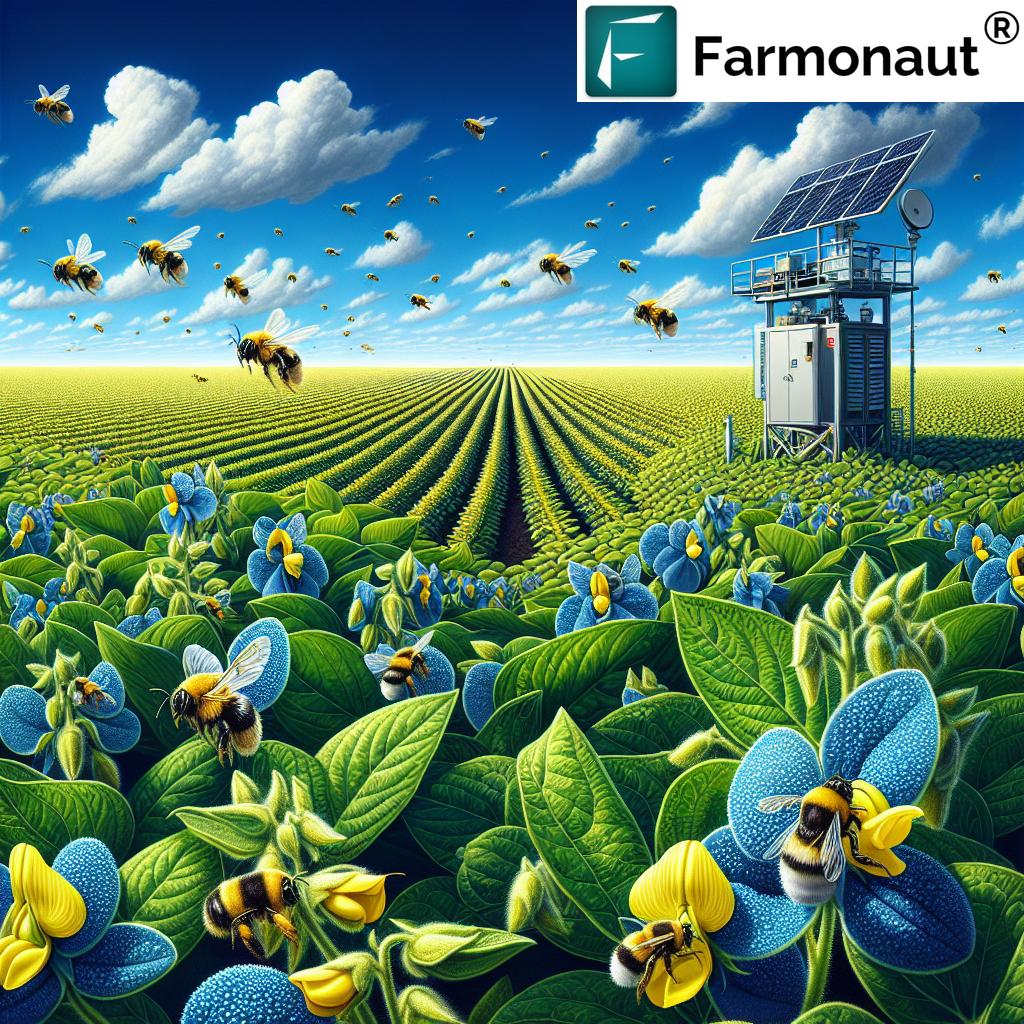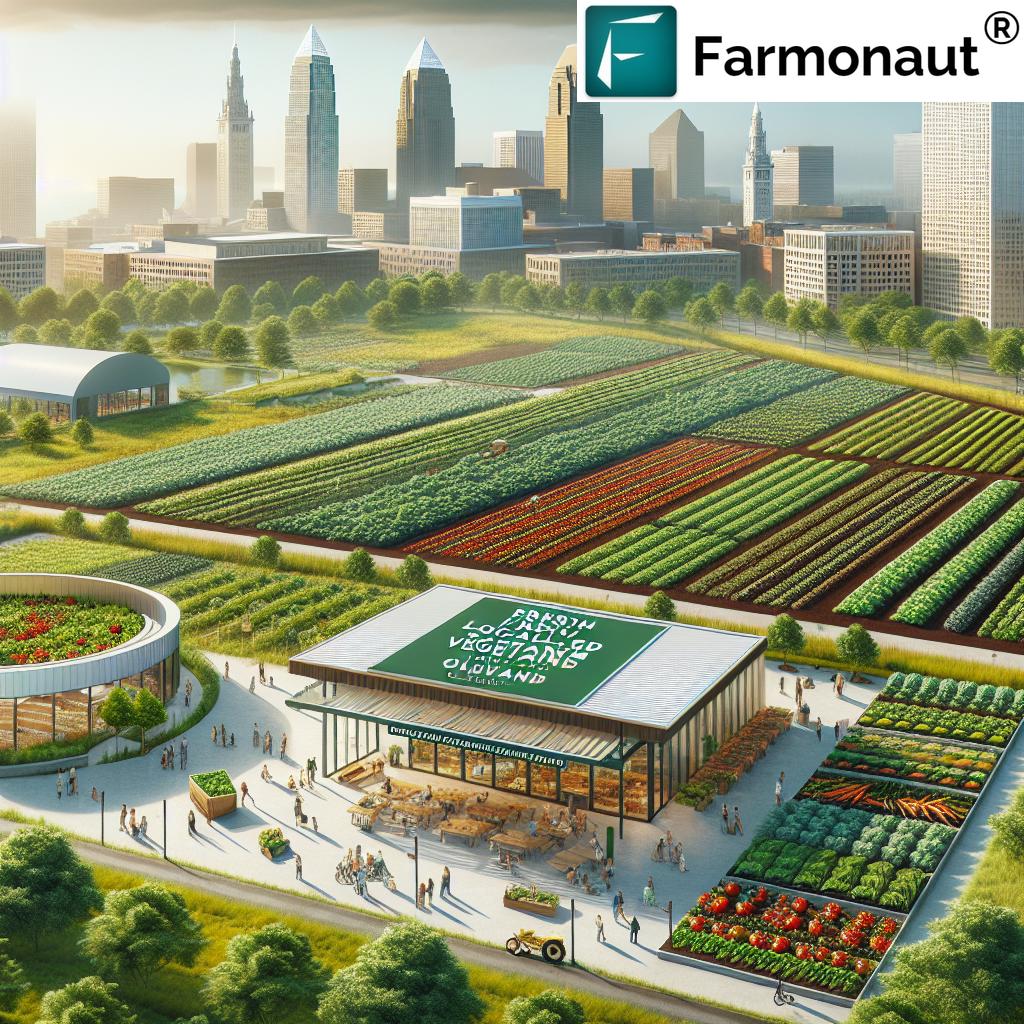Revive Ohio’s Pollinators: Expert Guide to Creating Thriving Habitats on Your Farm or Garden
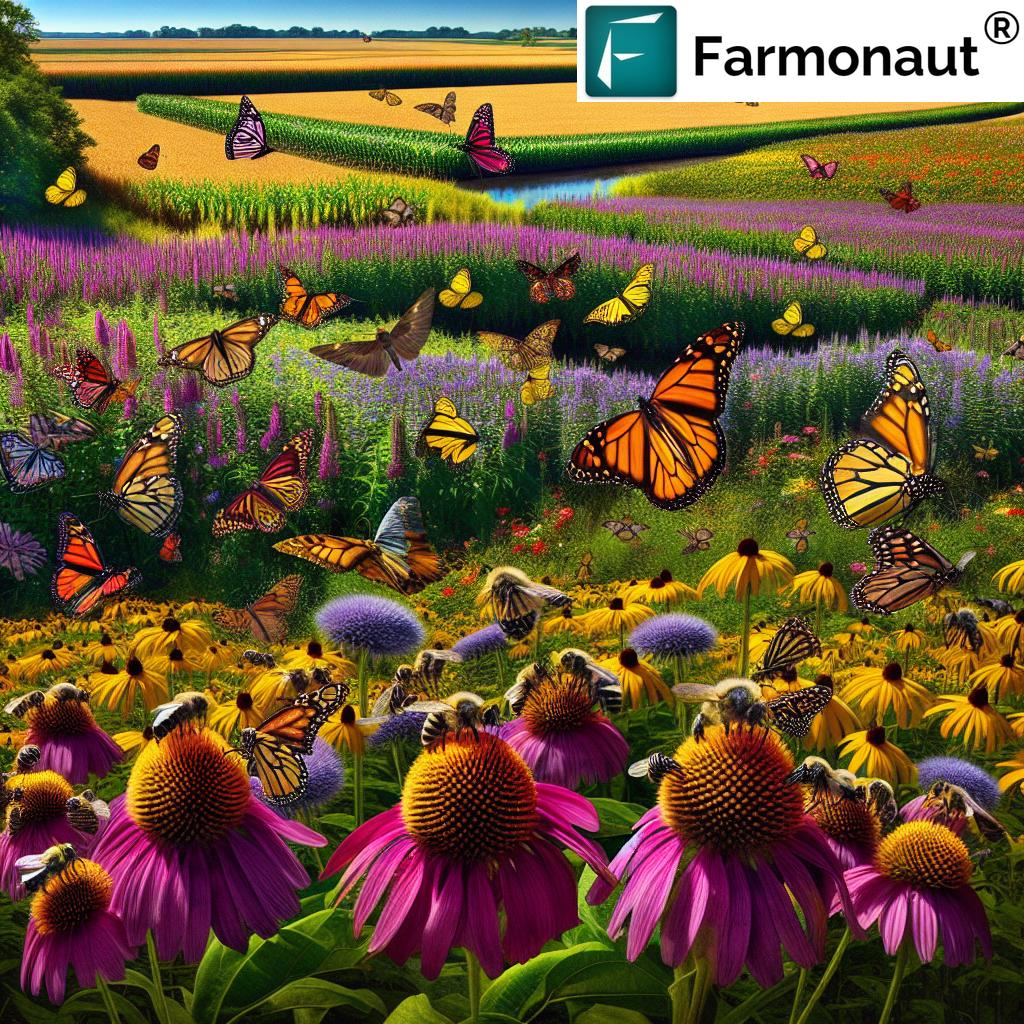
“Over 75% of global crops depend on pollinators, making habitat creation crucial for agricultural sustainability.”
Welcome to our comprehensive guide on creating thriving pollinator habitats in Ohio! As experts in agriculture and environmental conservation, we understand the critical role pollinators play in our ecosystem and food production. In this blog post, we’ll explore the importance of pollinators, the challenges they face, and provide practical guidance on establishing pollinator-friendly environments on your farm or garden.
The Importance of Pollinators in Ohio’s Agriculture
Pollinators are essential for the reproduction of many flowering plants, including numerous crops that we rely on for food. In Ohio, a state known for its diverse agricultural landscape, pollinators play a crucial role in maintaining both ecological balance and agricultural productivity.
According to the U.S. Department of Agriculture Forest Service, some bee populations have fallen by a staggering 80% between 2007 and 2023. This alarming decline highlights the urgent need for conservation efforts to support our pollinator friends.
Here are some key reasons why pollinators are vital for Ohio’s agriculture:
- Crop pollination: Many of Ohio’s important crops, such as apples, strawberries, and pumpkins, rely heavily on pollinators for fruit production.
- Biodiversity: Pollinators support the growth and reproduction of native plant species, maintaining the state’s rich biodiversity.
- Economic impact: The pollination services provided by bees and other insects contribute significantly to Ohio’s agricultural economy.
Native Pollinators in Ohio
Ohio is home to a diverse array of native pollinators, each playing a unique role in the ecosystem. Understanding these species can help us create more targeted and effective habitats. Some of the key native pollinators in Ohio include:
- Native bees: Ohio boasts over 500 species of native bees, including bumblebees, sweat bees, and mason bees.
- Butterflies: The iconic monarch butterfly, along with swallowtails, fritillaries, and many others, call Ohio home.
- Moths: Often overlooked, many moth species are important nighttime pollinators.
- Hummingbirds: The ruby-throated hummingbird is a crucial pollinator for many wildflowers.
By creating habitats that cater to these diverse pollinators, we can support a more resilient and productive ecosystem.
Challenges Facing Pollinators in Ohio
Pollinators in Ohio face numerous challenges that have contributed to their decline. Understanding these threats is crucial for developing effective conservation strategies:
- Habitat loss: Urbanization and agricultural intensification have reduced natural habitats for pollinators.
- Pesticide use: The widespread use of pesticides, particularly neonicotinoids, has harmful effects on pollinators.
- Climate change: Shifting weather patterns and extreme events can disrupt the delicate timing between pollinator activity and plant flowering.
- Diseases and parasites: Pathogens and pests, such as the Varroa mite in honeybees, pose significant threats to pollinator health.
Addressing these challenges requires a multi-faceted approach, including habitat creation, sustainable farming practices, and public education.
Creating Pollinator Habitats on Your Farm or Garden
Now that we understand the importance of pollinators and the challenges they face, let’s dive into practical steps for creating thriving pollinator habitats on your farm or garden in Ohio.
1. Site Selection and Preparation
Choosing the right location and properly preparing the site are crucial first steps in creating a successful pollinator habitat:
- Select a sunny spot: Most native wildflowers and pollinator-friendly plants thrive in full sun.
- Assess soil conditions: Conduct a soil test to determine pH and nutrient levels. Many native plants prefer well-draining soil.
- Remove existing vegetation: Clear the area of grass and weeds to reduce competition for your pollinator plants.
- Consider the layout: Plan for a diverse mix of plants that will provide food and shelter throughout the growing season.
Pro tip: For larger farm areas, consider establishing pollinator strips along field edges or between crop rows to maximize benefits while minimizing impact on production.
2. Selecting Native Plants for Pollinators
Choosing the right plants is key to attracting and supporting a diverse range of pollinators. Focus on native species that are well-adapted to Ohio’s climate and provide food and habitat for local pollinators.
| Plant Name | Bloom Season | Pollinator Attraction | Growing Conditions |
|---|---|---|---|
| Ohio Spiderwort | Late Spring – Early Summer | Bees, Butterflies | Full sun to part shade, moist soil |
| Purple Coneflower | Summer – Fall | Bees, Butterflies, Birds | Full sun, well-drained soil |
| New England Aster | Late Summer – Fall | Bees, Butterflies | Full sun, average to moist soil |
| Wild Bergamot | Summer | Bees, Butterflies, Hummingbirds | Full sun to part shade, dry to moist soil |
| Common Milkweed | Summer | Butterflies (esp. Monarchs), Bees | Full sun, well-drained soil |
This table provides a starting point for selecting native Ohio plants that support pollinators. Remember to include a variety of plants that bloom at different times to provide continuous food sources throughout the growing season.
3. Planting Techniques for Pollinator Success
Proper planting techniques can significantly improve the success of your pollinator habitat:
- Timing: Plant in spring or fall when temperatures are mild and rainfall is more frequent.
- Spacing: Follow recommended spacing guidelines for each species to allow proper growth and air circulation.
- Grouping: Plant in clusters or drifts to make it easier for pollinators to locate and feed from flowers.
- Layering: Include a mix of ground covers, mid-height plants, and taller species to create a diverse habitat structure.
Remember: Patience is key when establishing a pollinator habitat. Many native plants may take a year or two to become fully established and bloom.
4. Maintenance and Management
Proper maintenance is essential for the long-term success of your pollinator habitat:
- Watering: Provide supplemental water during establishment and periods of drought.
- Weeding: Remove invasive species and unwanted plants that may compete with your pollinator-friendly plants.
- Mowing: If mowing is necessary, do so in late fall or early spring to avoid disturbing active pollinators.
- Avoid pesticides: Minimize or eliminate the use of pesticides in and around your pollinator habitat.
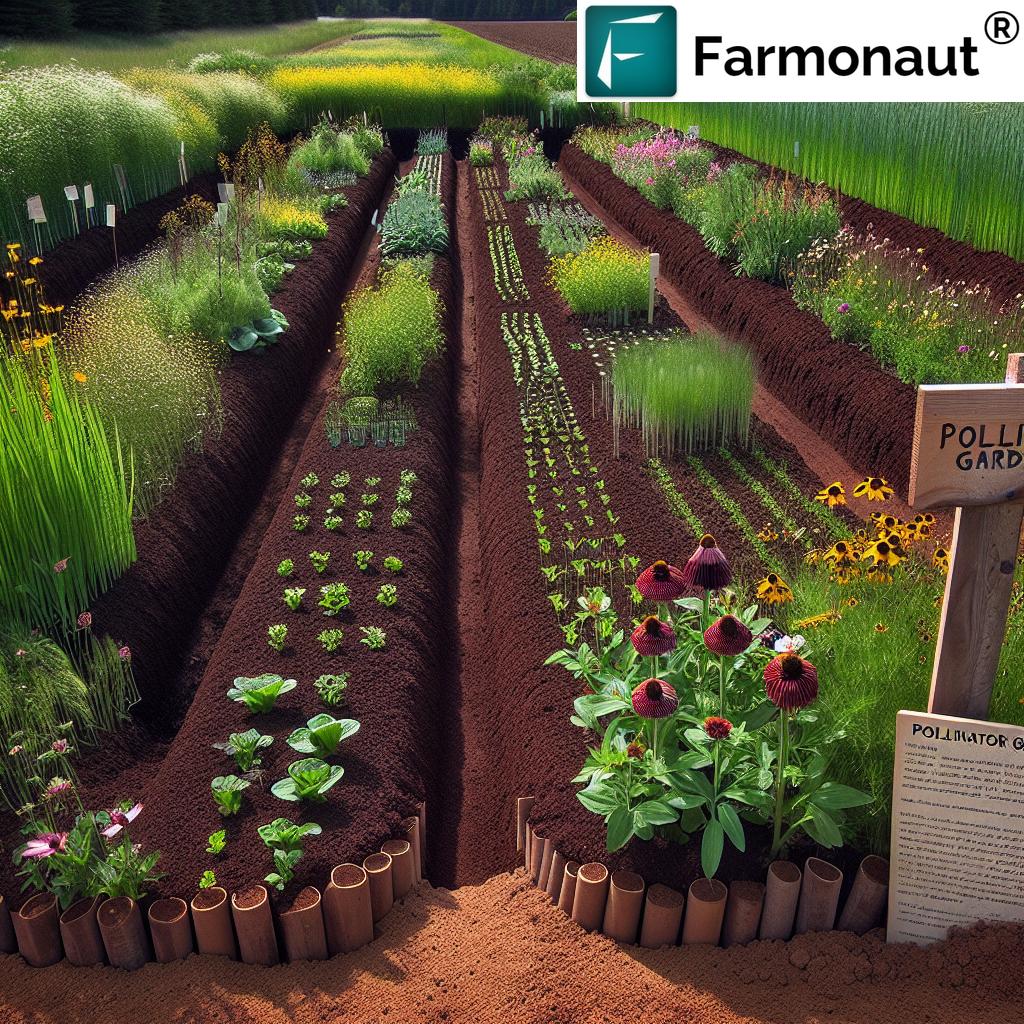
“Native wildflower gardens can increase local pollinator diversity by up to 50% within a single growing season.”
Integrating Pollinator Habitats into Farm Management
For farmers looking to support pollinators while maintaining productive agricultural operations, there are several strategies to consider:
1. Buffer Strips and Hedgerows
Creating pollinator-friendly buffer strips along field edges or waterways can provide habitat while also offering additional benefits such as erosion control and improved water quality. Consider using a mix of native grasses and wildflowers to create these multifunctional areas.
2. Cover Crops for Pollinators
Selecting cover crops that also benefit pollinators can provide food sources during periods when cash crops are not in bloom. Some pollinator-friendly cover crops include:
- Buckwheat
- Clover (red or white)
- Phacelia
- Sunflowers
These cover crops not only support pollinators but also improve soil health and reduce erosion.
3. Reduced Tillage Practices
Implementing reduced tillage or no-till farming practices can help protect ground-nesting bees and other beneficial insects. These practices also improve soil health and water retention, benefiting both crops and pollinators.
4. Integrated Pest Management (IPM)
Adopting IPM strategies can help minimize pesticide use while effectively managing pests. This approach involves:
- Regular monitoring of pest populations
- Using biological controls when possible
- Targeted application of pesticides only when necessary
- Choosing pest control products with lower toxicity to pollinators
By implementing these strategies, farmers can create a more balanced ecosystem that supports both agricultural production and pollinator conservation.
Monitoring and Evaluating Your Pollinator Habitat
Once you’ve established your pollinator habitat, it’s important to monitor its success and make adjustments as needed. Here are some ways to evaluate the effectiveness of your efforts:
1. Conduct Regular Pollinator Surveys
Periodically observe and record the types and numbers of pollinators visiting your habitat. This can help you understand which species are benefiting from your efforts and identify any gaps in your plant selection.
2. Assess Plant Health and Diversity
Monitor the growth and health of your planted species. Note which plants are thriving and which may need adjustments in care or placement.
3. Track Blooming Periods
Keep a record of when different plants bloom throughout the season. This can help you identify any gaps in nectar or pollen availability and guide future plant selections.
4. Collaborate with Local Experts
Consider partnering with local conservation groups, extension offices, or universities to conduct more thorough evaluations of your pollinator habitat’s impact.
By regularly assessing and adjusting your pollinator habitat, you can ensure its long-term success and maximize its benefits for both pollinators and your farm or garden.
The Role of Technology in Pollinator Conservation
As we work to support pollinators, modern technology can play a valuable role in our conservation efforts. At Farmonaut, we’re committed to leveraging innovative solutions to enhance agricultural practices and support environmental sustainability.
Our satellite-based crop health monitoring system can help farmers optimize their resource use, potentially reducing the need for harmful pesticides that can affect pollinators. By providing real-time insights into crop health and soil moisture levels, we enable more precise and sustainable farming practices.
For those interested in incorporating advanced technology into their pollinator conservation efforts, consider exploring our farm management solutions. Our tools can help you make data-driven decisions that benefit both your crops and local pollinator populations.
Community Engagement and Education
Creating pollinator habitats on your farm or garden is an excellent step towards conservation, but engaging the broader community can amplify your impact. Here are some ways to involve others in pollinator conservation:
1. Host Educational Events
Organize workshops or field days to share your knowledge about pollinators and habitat creation with neighbors, local schools, or community groups.
2. Participate in Citizen Science Projects
Join or promote citizen science initiatives that track pollinator populations, such as the Bumble Bee Watch or the Monarch Larva Monitoring Project.
3. Collaborate with Local Conservation Groups
Partner with local soil and water conservation districts, native plant societies, or wildlife organizations to expand your impact and access additional resources.
4. Share Your Success
Document and share your pollinator habitat journey on social media or local gardening forums to inspire others and exchange ideas.
By engaging the community, we can create a network of pollinator-friendly spaces that support biodiversity across Ohio and beyond.
Conclusion: A Call to Action for Ohio’s Pollinators
As we’ve explored throughout this guide, creating thriving pollinator habitats is crucial for the health of our ecosystems and the future of agriculture in Ohio. By implementing the strategies we’ve discussed – from selecting native plants to adopting pollinator-friendly farming practices – we can make a significant positive impact on pollinator populations.
Remember, every effort counts, whether you’re planting a small pollinator garden in your backyard or integrating pollinator habitats into large-scale farm operations. By working together and leveraging both traditional knowledge and modern technology, we can create a more sustainable and pollinator-friendly Ohio.
We encourage you to take action today. Start planning your pollinator habitat, share this knowledge with others, and consider how you can incorporate pollinator conservation into your daily practices. Together, we can revive Ohio’s pollinators and ensure a thriving ecosystem for generations to come.
FAQs
- Q: How long does it take to establish a pollinator habitat?
A: While some plants may bloom in the first year, it typically takes 2-3 years for a pollinator habitat to become fully established and provide maximum benefits. - Q: Can I create a pollinator habitat in a small urban garden?
A: Absolutely! Even small spaces can support pollinators. Focus on container-friendly native plants and vertical gardening techniques to maximize your impact. - Q: How can I protect pollinators from pesticides?
A: Minimize pesticide use, choose pollinator-friendly products when necessary, and apply pesticides in the evening when pollinators are less active. Always follow label instructions carefully. - Q: What are some common mistakes to avoid when creating a pollinator habitat?
A: Common mistakes include using non-native plants, over-mulching (which can harm ground-nesting bees), and failing to provide a water source for pollinators. - Q: How can technology help in pollinator conservation efforts?
A: Technologies like Farmonaut’s satellite-based crop monitoring can help optimize resource use and reduce reliance on harmful pesticides, indirectly benefiting pollinators. Additionally, mobile apps for plant identification and pollinator tracking can aid in habitat creation and monitoring efforts.
For more information on how technology can support sustainable farming practices and indirectly benefit pollinators, explore Farmonaut’s crop plantation and forest advisory services.
Ready to start your pollinator conservation journey? Check out our mobile apps for on-the-go farm management and pollinator habitat planning:
Earn With Farmonaut: Join our Affiliate Program
Earn 20% recurring commission with Farmonaut’s affiliate program by sharing your promo code and helping farmers save 10%. Onboard 10 Elite farmers monthly to earn a minimum of $148,000 annually—start now and grow your income!





